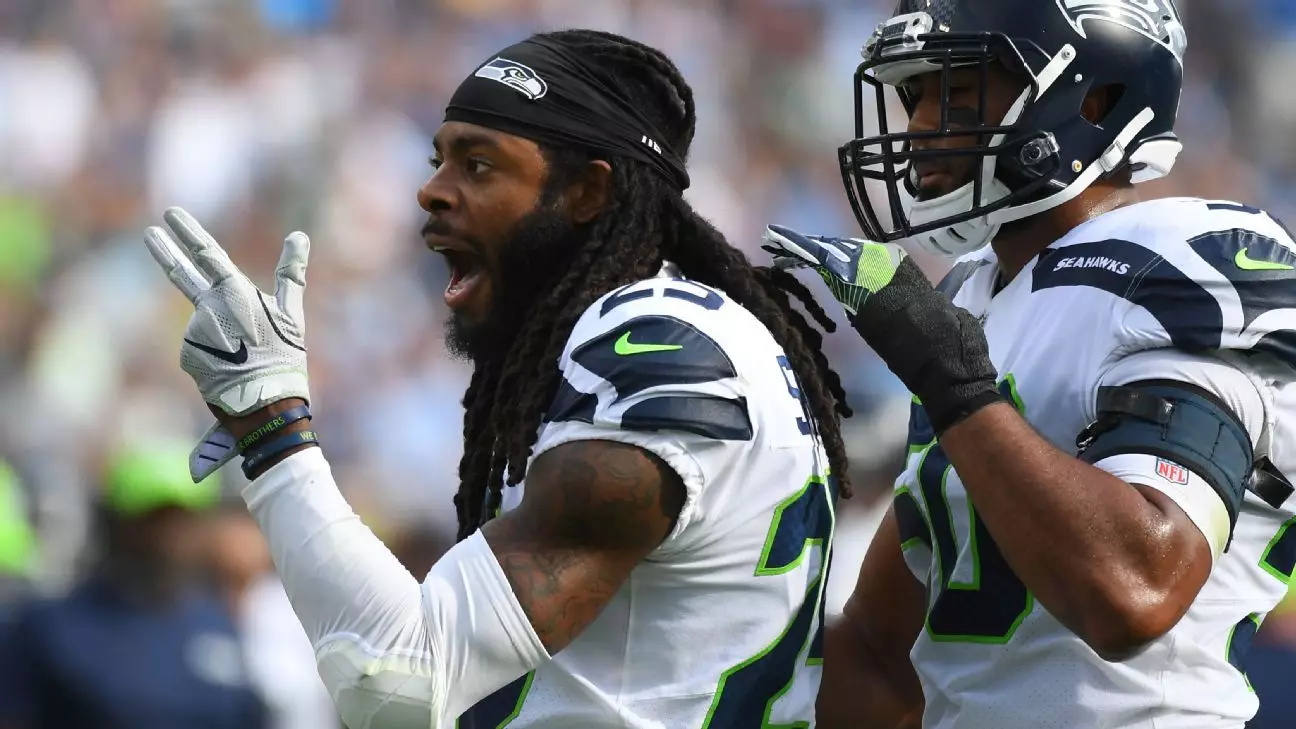In an alarming turn of events, athletes across the United States are finding their homes at the mercy of criminals, as highlighted by recent burglaries involving prominent figures in sports. A Seattle case has shone a light on this unsettling trend, with the arrest of Earl Henderson Riley IV, a 21-year-old man accused of orchestrating a series of high-profile burglaries targeting current and former MLB and NFL stars. The disturbing pattern suggests a calculated effort by criminal elements to exploit the wealth of these athletes, raising questions about their safety and the broader implications for society.
A Pattern of Crime with Flashy Targets
Riley’s escapades reportedly yielded over $6,000 in luxury Louis Vuitton merchandise from the home of Mariners pitcher Luis Castillo, alongside a staggering $194,000 in jewelry and high-end purses from Julio Rodriguez’s residence. The targeted thefts even extended to former Seahawks cornerback Richard Sherman, whose home was violated for watches valued at over $100,000. Such conspicuous acts of theft are not isolated incidents but part of a larger trend that has seen athletes’ homes increasingly placed in the crosshairs of determined burglars. This pattern speaks volumes about societal attitudes towards wealth and celebrity and depicts a troubling intertwining of admiration and envy that can sometimes turn into criminal behavior.
The news has exposed a dark reality: athletes, celebrated for their performances on the field, now find themselves navigating an environment ripe with risk and vulnerability, especially when they’re away from their homes for games or training camps. This heartbreaking reality turns the joy of sports into a new and complex anxiety — the fear of losing cherished possessions and, in worst-case scenarios, the safety of family members.
The Role of Organized Crime
What compounds the situation is the revelation that organized crime networks are allegedly orchestrating these burglaries. The Federal Bureau of Investigation (FBI) has issued warnings to sports leagues regarding this alarming trend, suggesting that criminal organizations are honing in on professional athletes. A memo from the NFL emphasized that homes of athletes have become increasingly coveted targets for skilled burglar groups. This raises essential questions about how leagues and law enforcement agencies can better protect these individuals from becoming victims of crime.
As Riley awaits his arraignment, his case symbolizes a cry for action — not just against the criminals who perpetrate such acts but also from the leagues and teams whose athletes are now part of targets painted by the very public that idolizes them. With organizations like the NFL and NBA already distributing security alerts to their members, the awareness has risen, but it cannot end there. Enhanced security measures, community engagement, and public education about the risks currently facing athletes must be implemented.
Inadequate Preparedness? The Need for Action
The King County Prosecuting Attorney’s office stated their commitment to identifying all parties involved, yet one must question why this situation escalated to such extremes in the first place? Shouldn’t preventative measures have taken priority before escalating to police investigations? The absence of effective security strategies can leave vulnerable individuals susceptible to persistent threats, and the responsibility extends beyond law enforcement. Teams and sports organizations need robust protocols to safeguard their athletes not only on the field but also at home.
Moreover, as athletes live highly public lives, they must also adopt a stronger awareness of their personal security. High-profile figures should be proactive about their safety, integrating advanced security systems, and utilizing discretion regarding their wealth’s visibility. The balance between personal life and public persona calls for a nuanced understanding of how security risks can affect them and their families.
Reconstruction of Athlete Security Protocols
This crisis compels a reimagining of how security is approached within athletic spheres. It is imperative that league executives, teams, and athletes collaborate to devise comprehensive security frameworks that ensure players feel secure in their domiciles as much as they do in stadiums. Regular consultations with law enforcement, community engagement, and education on personal safety strategies will help foster an environment where athletes can thrive without undue fear of criminal intrusion.
Athlete security is no longer merely a matter of convenience — it has become a pressing need. As society continues to grapple with issues relating to wealth, status, and crime, it is inadmissible that those who entertain and inspire us should feel unsafe in their own homes. It is high time for a monumental shift in the approach towards the safety of athletic heroes; their heightened vulnerabilities until addressed could lead to more severe consequences down the line.

